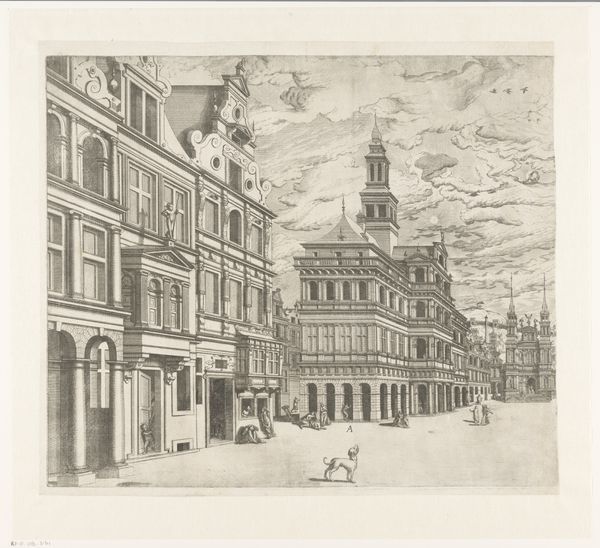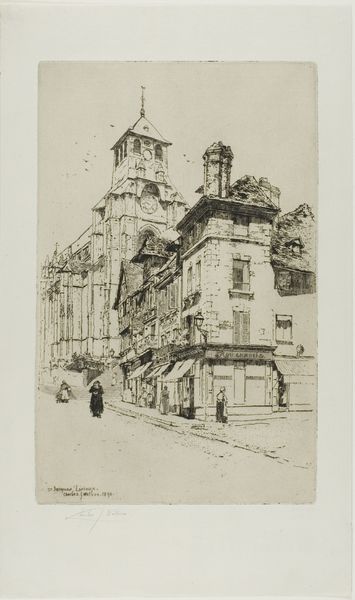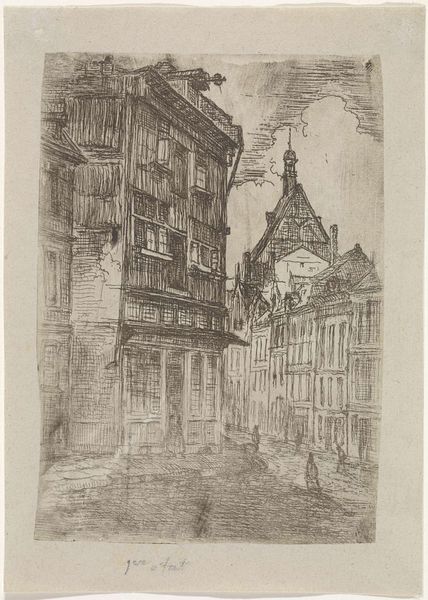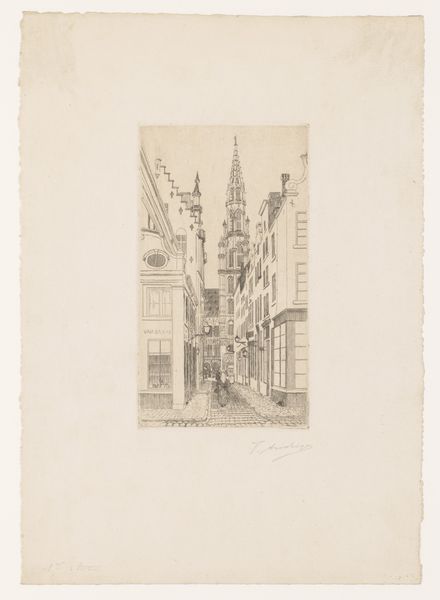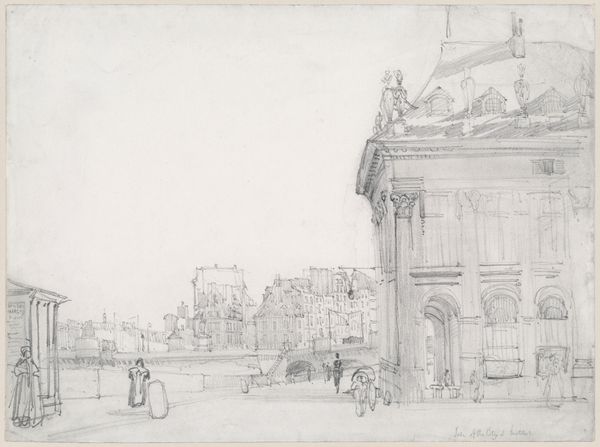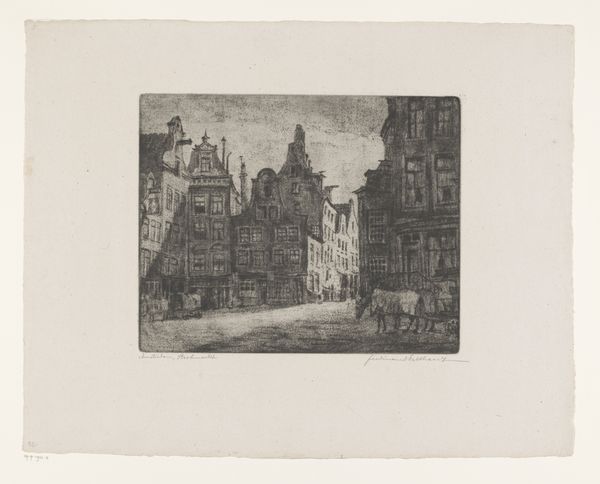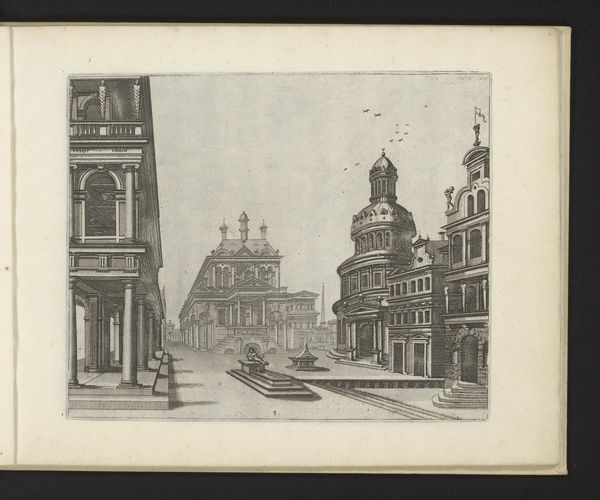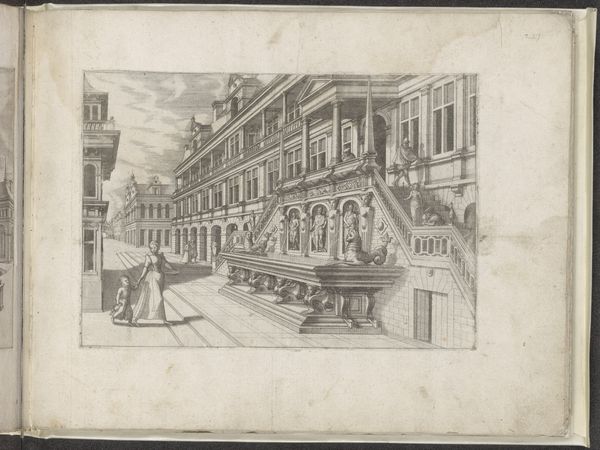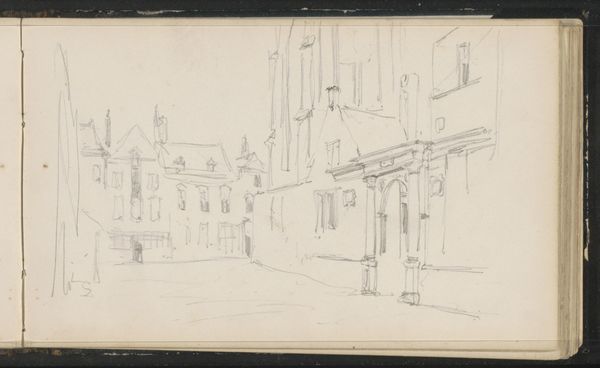
Perspective Design for a Stage Set of an Italian Cityscape 1784 - 1797
0:00
0:00
drawing, print, pencil
#
drawing
#
neoclacissism
# print
#
classical-realism
#
perspective
#
pencil
#
cityscape
Dimensions: 10 1/2 × 14 1/4 in. (26.7 × 36.2 cm)
Copyright: Public Domain
Curator: Before us, we have Antonio Mauro II’s "Perspective Design for a Stage Set of an Italian Cityscape," a pencil and print drawing created sometime between 1784 and 1797. It resides here at the Metropolitan Museum of Art. Editor: The atmosphere is uncanny; something about its sharp lines and calculated rendering makes it feel more like a blueprint than a bustling cityscape, almost dystopian. Curator: That calculated feeling comes from the very clear embrace of neoclassical ideals. It seeks to recreate and reimagine the grandeur of the past, and that, in itself, is heavy with symbolism of rebirth and reinvigoration of civilization. Editor: Absolutely. But consider who benefits from such a revival. Neoclassicism, especially within stage design, frequently served to uphold the status quo. Who are the players here? Who does this architectural vision represent? I’m always curious about how these spaces exclude as much as they include. Curator: That is a key point to raise about perspective drawings in general! Its single-point focus is, in itself, a symbol of control—a very specific gaze being constructed for an audience. It's about power and visual hierarchy. And what kind of stories are meant to unfold in this space, what social values are reinforced? Editor: Looking at the symbolism of the setting is especially potent, isn’t it? The clean, orderly streets versus the cramped, chaotic reality for much of the population at the time. Are we meant to aspire to an impossible, oppressive standard? The grid-like nature reinforces an imposed sense of control. Curator: Stage design always carries the weight of illusion, and in the late 18th century, this Italian city would have felt romantic, distant, maybe even offering the audience an escape from their present. But, as we see, even fantasy upholds concrete beliefs and desires. Editor: Right. This sketch prompts so many questions about who controlled representation during the late eighteenth century, especially through media meant for popular consumption. Curator: Yes. Thank you, it's been really great re-examining Mauro’s perspective on perspective. Editor: Indeed. Another look into how the past informs the present.
Comments
No comments
Be the first to comment and join the conversation on the ultimate creative platform.


